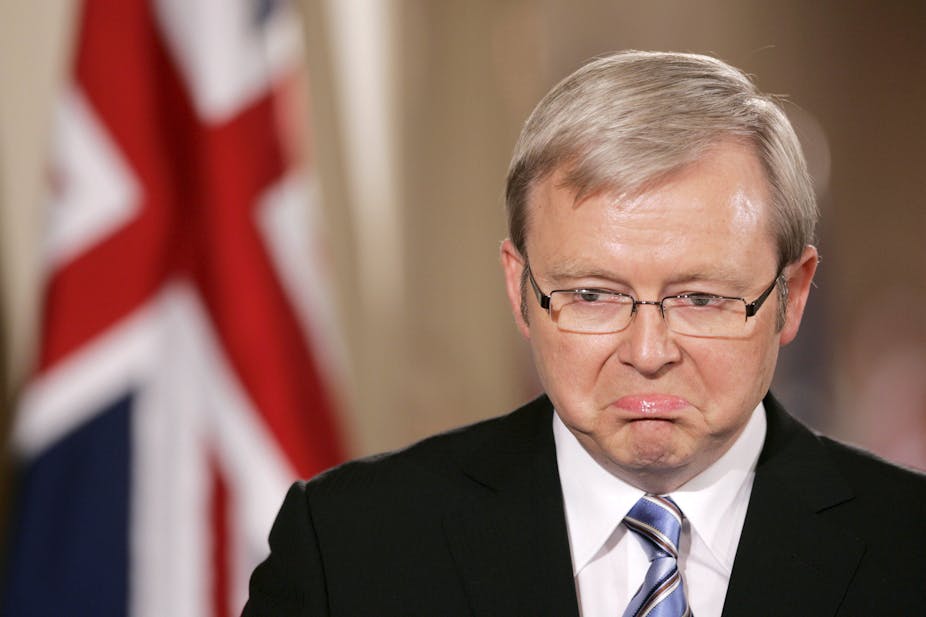Climate change is a problem for democracy. The scientific modelling is compelling and the evidence alarming. The problems begin when the science crosses into the democratic sphere of politics and public policy.
The scientists do not simply want a response. They want a disruption, a critical juncture, a new narrative challenging the status quo. This requires new institutions that create a new normal path to low emissions.
To forge new institutions requires a good understanding of democracy itself and the successful management of three democratic decision points. The first is the exogenous event (climate change) and the accompanying narrative that influences the choices made and paths taken.
Second is the critical juncture when an emergent institution supported by democratic practices such as participation may or may not get established. Third is the success of the new institution as the path becomes normal and is sustained by providing increasing, not decreasing, returns to supporters.
In democracy, small contingent decisions can have large and long-term consequences. Whitlam Institute research shows scientists, economists and environmentalists have failed to manage four critical junctures in the last six years.
The first failure
The failure at critical juncture #1 – then-opposition leader Kevin Rudd declares “climate change is the greatest moral challenge of our generation” – can be laid squarely at the feet of Rudd and scientists. At this juncture, those advocating a response to climate change needed to manage the narrative arising out of the science.
Rudd recognised that waiting for the future might mean there was no future. Rudd became prime minister in November 2007 and immediately set up a new Department of Climate Change.
The problem was the narrative. In “owning” the issue as he did, and in calling it the greatest moral challenge, Rudd accepted the scientists’ call for a disruption, a critical juncture, in a way that his opponents did not. But that small decision, to use “morality” not “science”, had long-term consequences in distorting the climate change narrative in Australia.
Scientists proved to be unreliable managers of this narrative. Science alone is not enough to sway democratic decision making, but scientists fractured support by conflating weather with climate modelling.
To show that climate change causes extreme weather it would be necessary to prove that greenhouse gases create events that are not caused by observed weather patterns such as La Niña or El Niño.
The Intergovernmental Panel on Climate Change (IPCC) states there is “low confidence” in attributing any changes in tropical cyclone activity to greenhouse gas emissions or anything else humanity has done.
Unfortunately, Australia’s most prominent climate scientists have fallen into the trap of suggesting global warming is causing extreme weather events. The issue here is whether it is wise for scientists to embrace a narrative that they know is not substantiated by the science for the purpose of building public support.
The second failure
The failure at critical juncture #2 – Rudd abandons climate change – can be laid squarely at the feet of Rudd and the economists. At this juncture, those advocating a response to climate change faced the problem of choosing the path to the new institution, establishing that as the status quo path and justifying paths not taken.
The path chosen was the Carbon Pollution Reduction Scheme. This was twice rejected in parliament. As a consequence, Rudd effectively shelved climate change policy, releasing sceptics and deniers nourished by the lack of participation and the abandonment of morality.

In Australia, economist Ross Garnaut was adviser to two Labor prime ministers. His neoclassical approach considered human-induced emissions of greenhouse gases are an externality, emitted into the atmosphere by individuals and firms without cost.
However, a wide range of victims will bear the resulting damages from climate change across time and space. A price on carbon through an emissions trading scheme aims to correct this market failure by making the value of social damages internal to the polluter’s decisions.
Garnaut and the economists adopted an inflexible, “rational” approach insisting that carbon pricing was the one best way to reduce emissions. Consequently, many policy options were ignored, many paths not taken, many trade-offs rejected.
It is not wise to try to build new institutions by being unwilling to listen to other views. Institutions, after all, solve collective problems and are by definition inclusive and participatory mechanisms.
The third failure
The failure of critical juncture #3 – prime minister Julia Gillard establishes the Multi-Party Climate Change Committee (MPCCC) – can be laid squarely at the feet of Gillard and the environmentalists. At this juncture, those advocating a response to climate change faced the problem of using democratic means such as participation to get the new institution established.
After the 2010 election, Gillard signed an agreement with the Greens to put a price on carbon. A small decision later, to narrow formal membership of what became known as the MPCCC to cross-parliamentary party participation, had long-term consequences for Gillard, the Greens and the environmental movement.
In accepting a narrow form of participation in the MPCC, the Greens severed its connection with the broader environmental movement.

A fourth failure?
We now find ourselves at critical juncture #4 – carbon-pricing legislation passes parliament, and is repealed? The fixed-price mechanism for carbon was legislated in July 2012 but in 2013 Tony Abbott became prime minister, promising that his first act would be to repeal this legislation.
Failure at these critical junctures tells us that what has happened before will influence the Coalition’s “Direct Action” policy, as the government attempts to form a new critical juncture and institutionalise a non-price approach to emissions reduction. Path dependence suggests “Direct Action” will fail.
Scientists, economists and environmentalists need to learn how democracy works. That means learning to collaborate, explain, negotiate, teach and learn in the community if this (last) chance to save the planet is to work.

